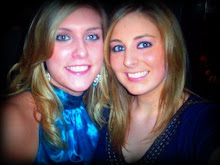Downs Syndrome Information
Named after John Langdon Down, the first physician to identify the syndrome, Down syndrome is the most frequent gentic cause of mild to moderate mental retardation and associated medical problems and occurs in one out of 800 live births, in all races and economic groups.
Here are some physical features that are associated with downs syndrome:Flat face with an upward slant to the eye, short neck, and abnormally shaped ears, deep crease in the palm of the hand, white spots on the iris of the eye, poor muscle tone, loose ligaments
and small hands and feet. Downs also has some other health factors such as hearing difficulties, eyesight problems, intestinal problems and heart disease. As women age it is more likely for their babies to have a higher chance of developing downs. By the age of 42, 1 in 60 new borns will be a downs baby. While the children grow up, most of the kids go through early intervention services and are able to receive a great education. After receiving a great education many individuals with downs are able to create a longer and fulfilling lives. The average life expectancy for individuals with downs is around the age of 50.
Subscribe to:
Post Comments (Atom)

Michelle,
ReplyDeleteI think it is wonderful that you are trying to educate people about Down Syndrome. The best part of your post is when you said it is in all races and all economic groups. Since I am studying special education (and so are you), I feel it is very important for people to know this. Also, I like how you added in some of the physical characteristics of Down Syndrome and some of the problems individuals with Down Syndrome must face on a everyday basis. I thought this post was very beneficial and informative. Great job!
Michelle, I found your post very interesting and informative. I have a cousin who has Down Syndrome. She is 28, and is one of my most favorite people to be around. She is involved in K.A.R.E camp, which is a program in our community for all ages who have disabilities. She was also living in an assisted community, so she felt a better sense of independence than if she were living with her parents. I feel much more informed about her condition and have a better understanding of the risks. Great post!
ReplyDelete